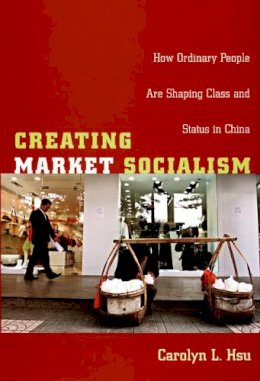
Creating Market Socialism: How Ordinary People Are Shaping Class and Status in China
Carolyn L. Hsu
Hsu’s ethnographic research, conducted in the city of Harbin in northwestern China, included participant observation at twenty workplaces and interviews with working adults from a range of professions. By analyzing the shared stories about status and class, jobs and careers, and aspirations and hopes that circulate among Harbiners from all walks of life, Hsu reveals the logic underlying the emerging stratification system. In the post-socialist era, Harbiners must confront a fast-changing and bewildering institutional landscape. Their collective narratives serve to create meaning and order in the midst of this confusion. Harbiners collectively agree that “intellectuals” (scientists, educators, and professionals) are the most respected within the new social order, because they contribute the most to Chinese society, whether that contribution is understood in terms of traditional morality, socialist service, or technological and economic progress. Harbiners understand human capital as an accurate measure of a person’s status. Their collective narratives about suzhi shape their career choices, judgments, and child-rearing practices, and therefore the new practices and institutions developing in post-socialist China.
Product Details
About Carolyn L. Hsu
Reviews for Creating Market Socialism: How Ordinary People Are Shaping Class and Status in China
Critical Sociology
“Hsu’s extensive ethnographic research and secondary-literature analysis make this text a pleasant pathway to understanding China’s current social-stratification system. The flowing writing style strengthens her arguments and expands her effectiveness in unraveling the process in which ordinary people shape class and status in China’s marketplace. The text is, therefore, easily accessible to readers of different backgrounds with interest in Chinese political structure, culture, and market reform.”
Linda Q. Wang
International Social Science Review
“The qualitative data in this study are rich, and the text itself is accessible and well-written; Hsu goes to considerable lengths to avoid complex academic jargon, and she presents her points in a straightforward manner. She also makes great efforts to draw out the historical linkages in the narratives she analyzes, pointing to narrative threads drawn from pre-Communist, Maoist, and reform-era discourses.”
Amy Hanser
Canadian Journal of Sociology
